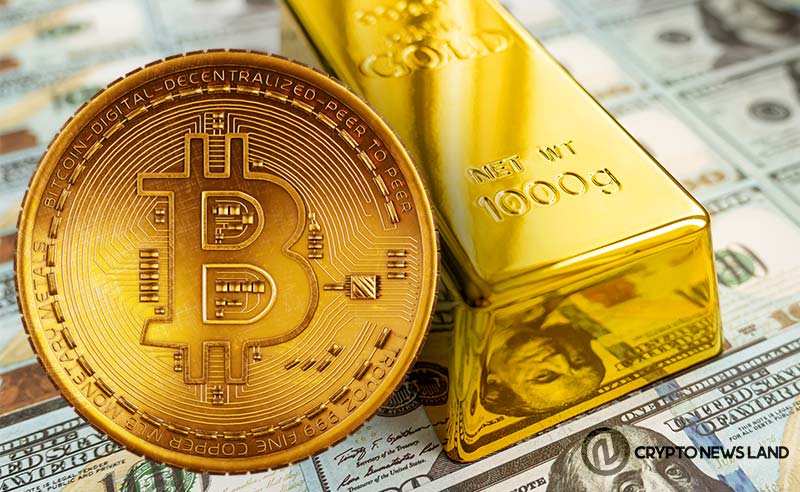- Bitcoin vs. gold: Debate centers on investment supremacy, inflation hedge, and practical utility.
- Anthony Scaramucci champions Bitcoin’s digital gold narrative, emphasizing its portability and deflationary nature.
- Peter Schiff advocates for gold’s intrinsic value, highlighting its industrial uses and historical stability.
Will Bitcoin be able to outperform gold as a haven asset as well as the best hedging instrument against inflation? here are views from Anthony Scaramucci, Erik Voorhees, Nouriel Roubini, Peter Schiff, and Eric Balchunas.
In a highly heated debate hosted by ZeroHedge and aired on YouTube, billionaire investor Anthony Scaramucci of SkyBridge Capital debated with prominent analyst Peter Schiff over whether Bitcoin (BTC) or gold serves as a better inflation hedge.
They were joined by ShapeSchift CEO Erik Voorhees and New York University (NYU) economics professor Nouriel Roubini. Peter Schiff, a Bitcoin critic opened the debate by stating that Bitcoin was created as a digital currency. However, this plan failed to function properly and effectively because it was slow and expensive.
Then, Bitcoin supporters tried to reposition the asset as a digital version of gold. However, in his view, the intrinsic value of gold is still far from the intrinsic value of gold seen from its physical properties. Schiff said that Bitcoin is no longer digital gold, but the image of a hamburger is digital food.
Schiff emphasized gold’s obvious utility in industries such as jewelry and electronics, comparing it to Bitcoin, which he said lacks practical utility and utility. Regarding gold’s eternal value, Schiff asserts that gold maintains its intrinsic properties over time, serving as a true store of value. Schiff also argued that Bitcoin’s value is based solely on speculative demand and does not reflect any practical utility or application.
Scaramucci also refuted Schiff’s argument by highlighting that only 5% of gold’s value comes from production purposes, with the majority attributed to its acceptance as a store of value. He emphasized that Bitcoin, like gold, has a deflationary aspect due to its fixed supply.
Scaramucci views Bitcoin as “digital gold”, noting its portability compared to physical gold. Scaramucci also pointed out that Bitcoin is following an adoption curve that will impact its value for decades, likening it to the trajectory of technology stocks that become standard over time and contribute to the S&P 500 index.
Meanwhile, in X’s post, Eric Balchunas, a Senior ETF Analyst, compared Bitcoin to gold, but in the teens, implying a stark contrast between the two assets. Balchunas describes Bitcoin as a “golden son” – a teenager on his way to independence. Like all teenagers, Bitcoin has huge potential for development and advancement, but also faces numerous challenges and impediments in the preparation.
Bitcoin has viably overcome numerous challenges over a long period. The cryptocurrency has survived a few sharp cost drops and overseen to pick up the belief of an expanding number of investors and institutions. However, Bitcoin still faces administrative and far-reaching adoption challenges.
A comparison between Bitcoin and gold gives a few understanding of the nature and potential of both assets. Gold may be a stable and safe store of prices, while Bitcoin is an innovative and potentially disruptive digital asset. Investors considering investing in any of these assets should understand the risks and potential of each.

